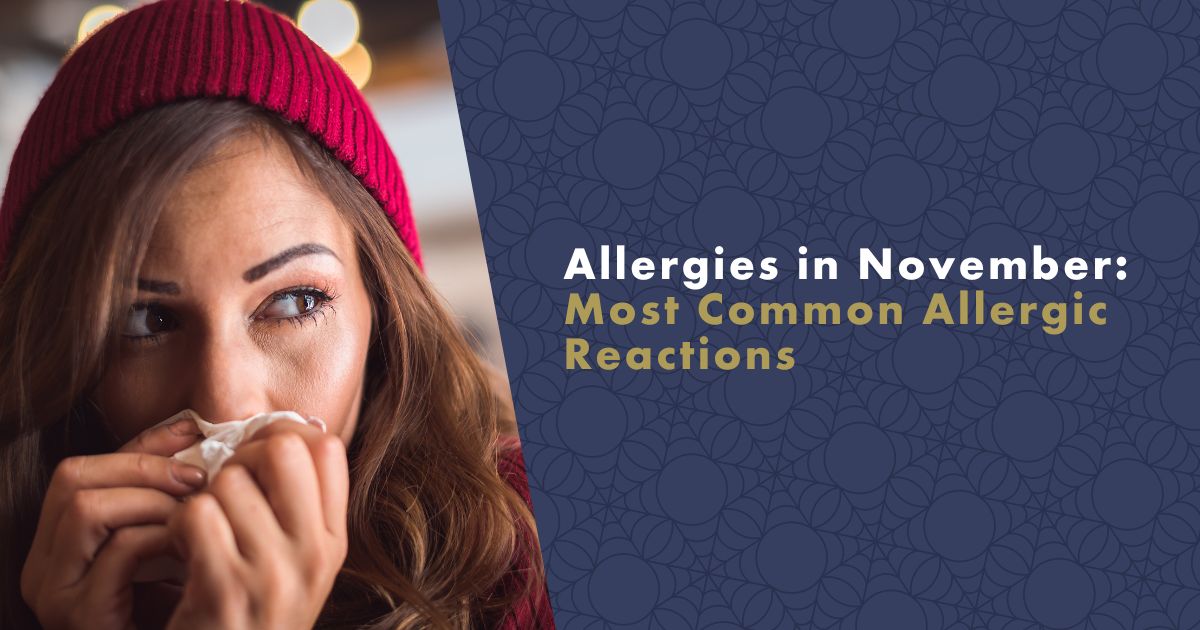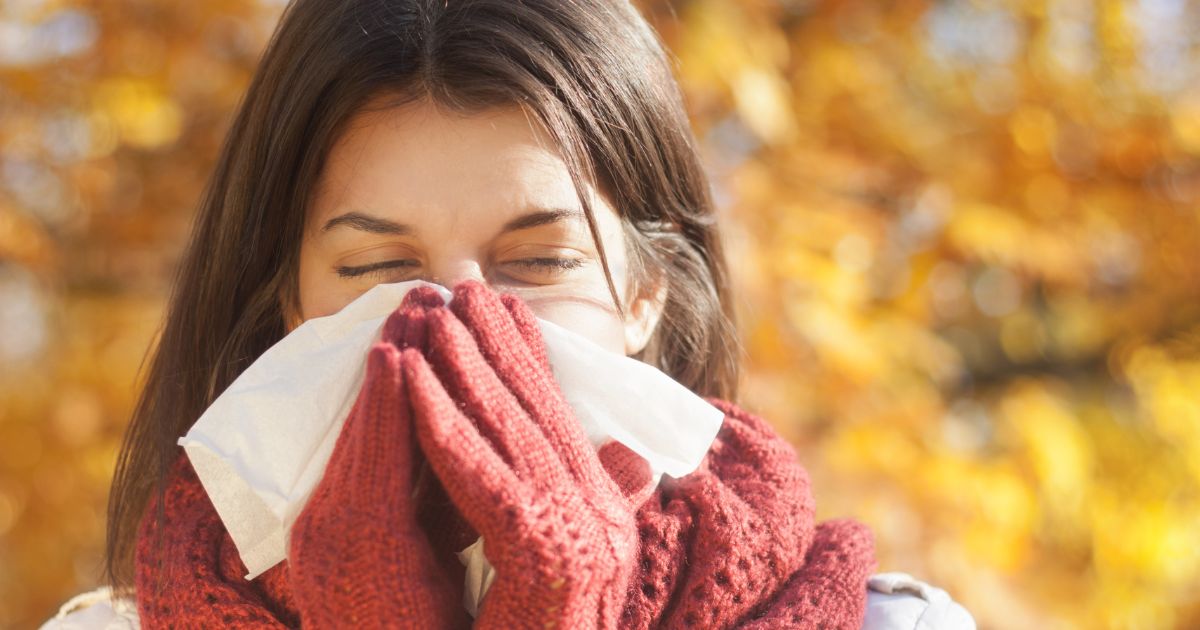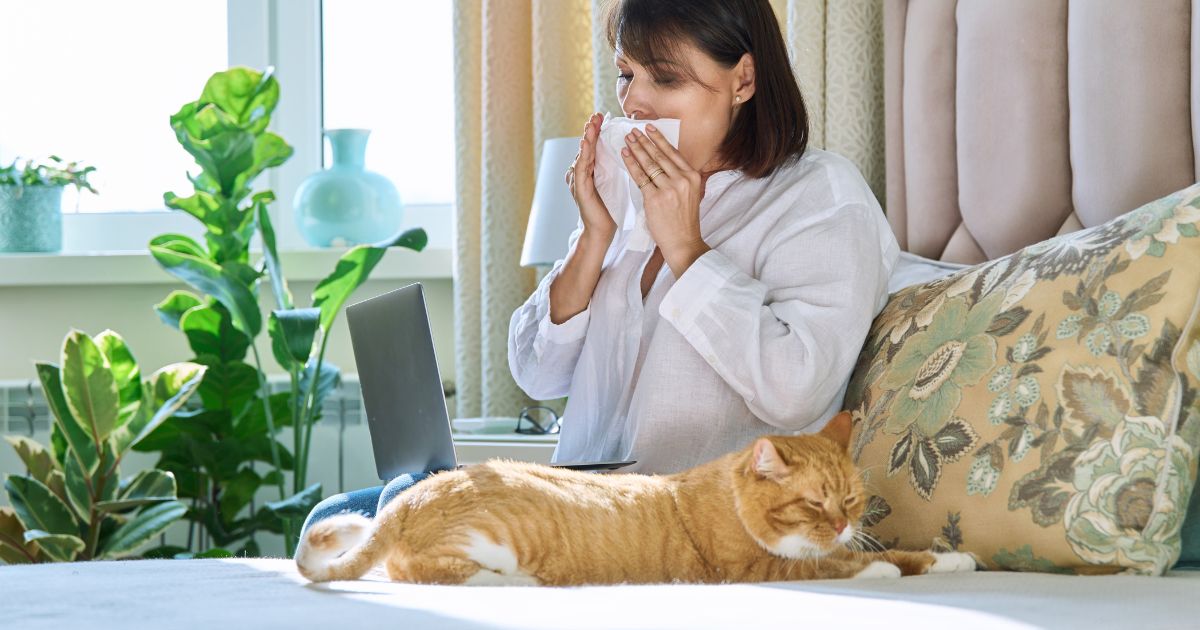With November comes cold and damp weather, bringing increased humidity in homes and apartments, leading to the presence of mold and a higher incidence of dust mites in households. Both mold and dust mites thrive in higher humidity, making this season less enjoyable for those affected. Only pollen allergy sufferers can rejoice, as pollen levels are minimal during this period. Winter allergies pose a challenge, as patients often struggle to distinguish between an allergic reaction and a common cold. Let's explore how to differentiate between allergy and cold symptoms and how mold and dust mite allergies manifest. We'll also discuss what can be done about it.

Most Common Allergies in November
As mentioned earlier, in November, allergies to herbs or grasses are no longer a concern, as they have long since withered. However, allergy sufferers may still experience issues with other allergens, such as dust mites and mold. With the onset of the heating season, households see an increase in mold and dust mites, which are common triggers for allergic reactions.
Dust Mite Allergies
Allergies to dust mites commonly manifest as:
- Sneezing
- Reddish eyes
- Runny or congested nose
- Itching of the nose, eyes, or throat
- Dry cough
Allergies often worsen at night because dust mites thrive in bedding, pillows, and mattresses. Dust mites feed on dead human skin cells, which are abundant in bed, and they prefer warmth and darkness.

Tip: Is allergy hereditary? Find out on the blog.
Dealing with Dust Mite Allergies
As mentioned earlier, dust mites are most prevalent in bedding. The most effective protection is using anti-dust mite bedding, including pillows, duvets, covers, and sheets that prevent dust mites and their allergens from infiltrating.
Regular cleaning is essential, and not just regular ventilation but also the use of air purifiers with HEPA filters.
Mold Allergies
Mold allergies can manifest similarly to dust mite allergies. Some common symptoms of mold allergies include:
- Sneezing
- Runny nose
- Red, itchy eyes
- Itching of the nose, eyes, or throat
- Shortness of breath
- Dry cough
How can you tell it's a mold allergy? If you are outdoors or in a place with no humidity issues, you should not experience these symptoms. However, if your symptoms worsen at home or in specific rooms, you should pay attention – it's likely a mold allergy.
Addressing Mold Allergies
If you already have mold at home, it's crucial to remove it mechanically. As a preventive measure, consider using dehumidifiers that help consistently reduce air humidity or use an ozone generator occasionally.

Tip: Read the article on mold allergy.
5 Tips for Managing Allergies in November: Preventing Allergic Reactions
As mentioned earlier, the main culprits for allergic reactions in November are mold and dust mites. Fortunately, both allergies share a similar prevention approach that is straightforward.
-
Keep the bedroom clean - Regularly ventilate and clean your bedroom to reduce the presence of dust mites and mold. Use an air purifier and occasionally use an ozone generator against mold. Maintain the bedroom temperature around 18°C, which is ideal for reducing the risk of allergic reactions.
-
Keep low air humidity - Dust mites thrive in humid air, so maintain lower air humidity, ideally below 50%. You can achieve this with air dehumidifiers.
-
Protect your bed - Use anti-dust mite pillows, duvets, and covers with nano-fiber membranes. These products create a barrier between you and dust mites. Avoid using pesticides to eliminate dust mites, as their effect is short-lived and not something you want to breathe in at night.
-
Remove carpets and other textiles – In the case of a strong allergic reaction, consider removing carpets and curtains, at least in the bedroom. Textiles harbor the most dust mites and their allergens.
-
Use air purifiers - Invest in a quality air purifier with a HEPA filter that can capture not only fine dust mites but also other allergens from the air.
#produkty#https://www.nanospace.store/anti-dust-mite-bedding/
Learn More About Allergies:
FAQ - Frequently Asked Questions
How to distinguish allergy from a cold in November?
Although a cold may have similar symptoms to allergies, with November allergies, allergic reactions worsen indoors, and with dust mite allergies, the most significant symptoms occur at night or in the morning after waking up. Allergies also do not respond to cold medications. Additionally, allergies do not cause fever. People often mistake allergic rhinitis for a cold. However, if rhinitis lasts more than 10 days, you should consider whether it might be an allergy.
Sources
- THOMAS, Wayne R., et al. Characterization and immunobiology of house dust mite allergens. International archives of allergy and immunology, 2002, 129.1: 1-18.
- FIALOVÁ, Ilona. Zima je obdobím zvýšené nemocnosti dětí s astmatem. Řízení školy: Speciál pro mateřské školy, 2013, 10.
- JANÍČKOVÁ, H. Alergie na roztoče a plísně. Pediatr. pro Praxi, 2009, 10.3: 163-166.

